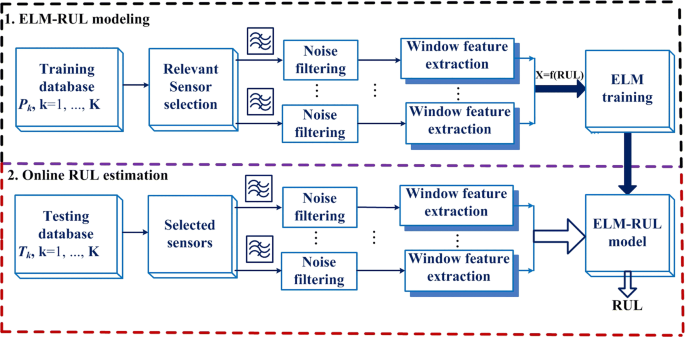This paper aims to improve data-driven prognostics by presenting a novel approach of directly estimating the remaining useful life (RUL) of aero-engines without requiring setting any failure threshold information or estimating degradation states. Specifically, based on the sensory data, RUL estimations are directly obtained through the universal function approximation capability of the extreme learning machine (ELM) algorithm. To achieve this, the features related with the RUL are first extracted from the sensory data as the inputs of the ELM model. Besides, to optimize the number of observed sensors, three evaluation metrics of correlation, monotonicity and robustness are defined and combined to automatically select the most relevant sensor values for more effective and efficient remaining useful life predictions. The validity and superiority of the proposed approach is evaluated by the widely used turbofan engine datasets from NASA Ames prognostics data repository. The proposed approach shows improved RUL estimation applicability at any time instant of the degradation process without determining the failure thresholds. This also simplifies the RUL estimation procedure. Moreover, the random properties of hidden nodes in the ELM learning mechanisms ensures the simplification and efficiency for real-time implementation. Therefore, the proposed approach suits to real-world applications in which prognostics estimations are required to be fast.

Diagram of proposed direct prognostics scheme. (Image by XIOPM)
Download: